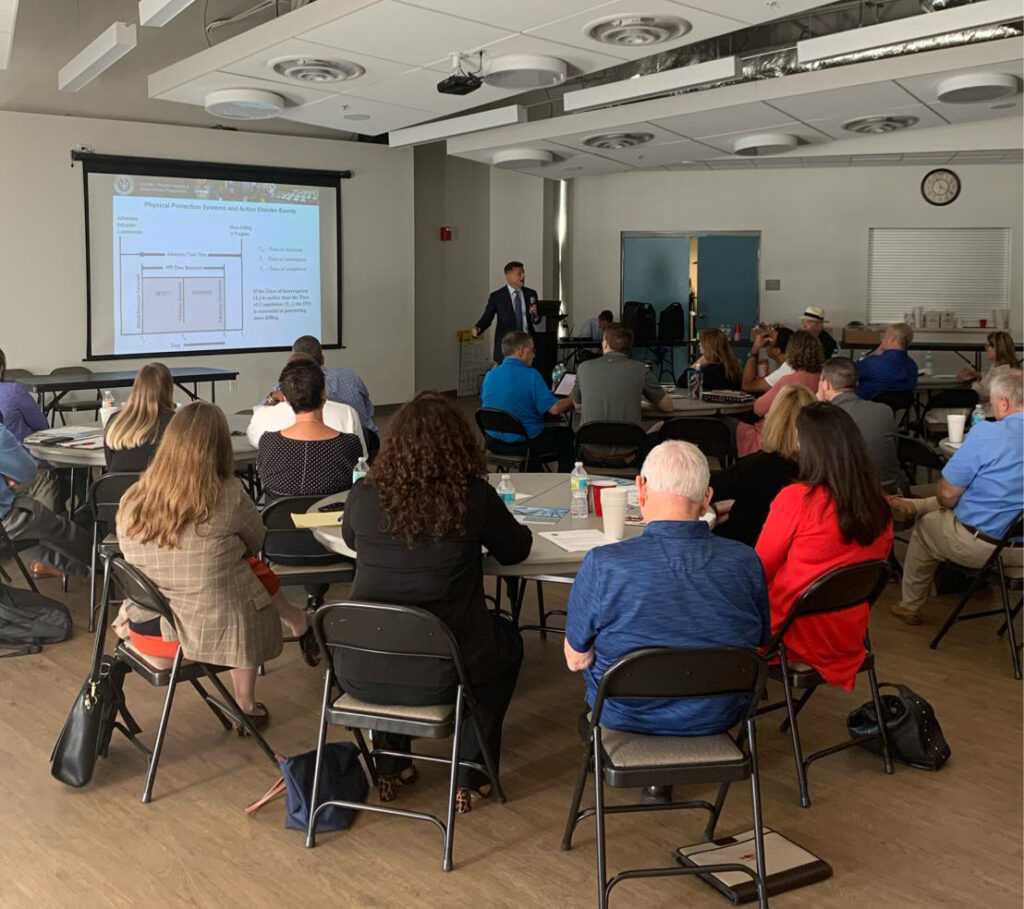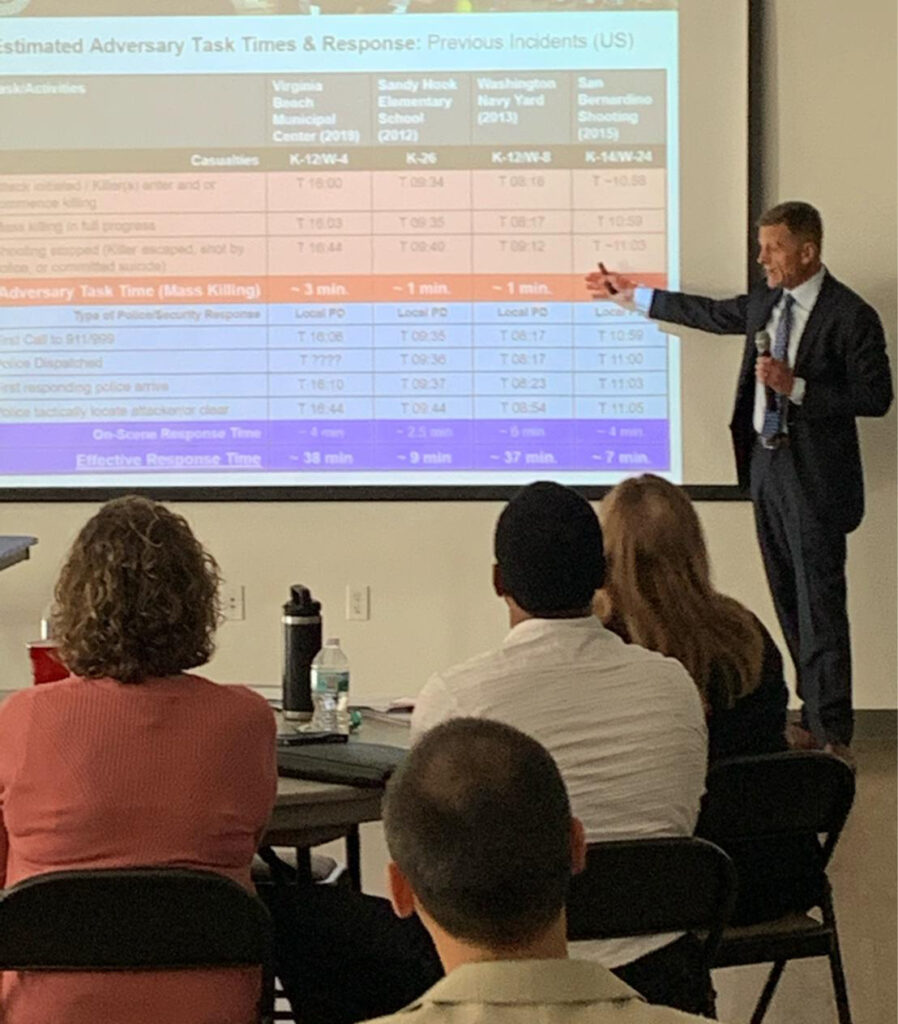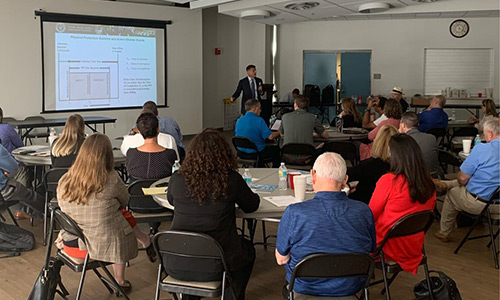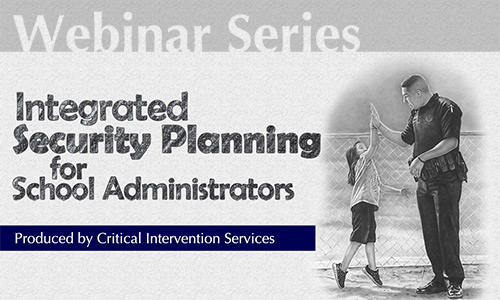The St. Petersburg Times
By Paul De La Garza, Times Staff Writer
Published January 11, 2004
In the post-Sept.11 era of terrorist threats and color-coded warning levels, such security operations sound quaint. Now TECO is sending a warning: Those days are over.
Starting at midnight, the utility will deploy a private force of antiterrorism officers who will be highly trained and armed to the teeth.
Around the clock, nearly three dozen officers carrying 9mm handguns and AR-15 semiautomatic rifles will patrol TECO’s four power plants in Hillsborough and Polk counties. They are the only private guards allowed by the state to carry such rifles besides those protecting nuclear plants.
TECO’s armed force will be complemented by new sensor alarms, surveillance cameras and crash barricades. There are plans for better contact with law enforcement and federal Homeland Security officials. And TECO is beefing up efforts to gather intelligence on individuals or groups who could threaten its plants.
“When this deployment is made,” said Mike Middlebrooks, a senior security official at TECO, “we’re sending a message to the bad guy: Don’t come here!”
The heightened security follows a consultant’s study that exposed TECO’s vulnerability to terrorists and assessed the potential impact of an attack at its plant near the Port of Tampa. It could trigger a blackout throughout Florida, and economic losses in the Tampa Bay area could exceed $600-million a day.
If the attack damaged anhydrous ammonia tanks at the port, the results could be deadly. Another study found that as many as 37,300 people within a 3.3-mile radius of the port could be affected by the ammonia.
TECO officials say the study of the Gannon/Bayside power station by Critical Intervention Services Inc. in Clearwater reinforced what they knew: The terrorist threat at the facility is high, because old-style security plans were designed to address conventional threats, not aircraft hijackings and car bombings.
So tonight, the utility embarks on a new era of unprecedented security. Experts say the level of instruction the force received through CIS under a five-year, multimillion-dollar contract rivals the training of federal law enforcement and the military.
“The training you are providing to the security personnel at Critical Intervention Services (CIS), military personnel and law enforcement professionals is unmatched by civilian readiness training for the war on terror,” Agent Jerry D. White of the Protective Services Detail at U.S. Special Operations Command in Tampa wrote to CIS.
The utility expects to deploy more armed guards in the future. A new training program begins in February.
This past month TECO and CIS gave the St. Petersburg Times access to the training in Tampa and St. Petersburg. They want to publicize their plans to discourage terrorists.
* * *
It’s early Sunday morning and pouring rain. The day is dominated by news that U.S.-led coalition forces have captured Saddam Hussein.
Inside a hotel conference room in Tampa, K.C. Poulin, chief executive officer of CIS, leads the orientation for ex-military and ex-law enforcement officers who will make up TECO’s antiterrorism squad.
The group was culled from more than 700 applicants. The men – there are no women – underwent a grueling selection process, including IQ, psychological and drug tests, as well as criminal and credit background checks.
Poulin tries to instill a sense of pride in the group by saying they’re making history.
He says no other private security force in the industry has the type of antiterrorism training they will receive.
That claim cannot be independently confirmed.
As a rule, utility companies do not reveal their security plans. Progress Energy Inc., for example, would not discuss security at its power plants aside from acknowledging that there are armed guards at its Crystal River nuclear plant.
Assessing the potential effectiveness of TECO’s security plan to deter a terrorist attack also is difficult.
Jim Lewis, director of the Technology and Public Policy Program at the Center for Strategic and International Studies in Washington, said TECO’s security plan is impressive.
“This isn’t a race,” Lewis said. “It’s not who’s first. It’s more like, who’s passed the bar, who’s passed the exam, and it sounds like they’ve passed the exam.”
Literally.
To stay in the program, the antiterrorism officers must pass a written test. A typical question: According to the FBI, more than 88 percent of terrorist attacks in the United States are a) explosive or incendiary bomb attacks b) kidnappings c) armed assaults d) biological attacks or e) cyber attacks.
The answer is a.
The guards will earn between $25,000 and $30,000 a year after completing 245 hours of training. They will learn about issues ranging from hazardous materials to explosive devices. And each will be qualified to fire a 9mm Springfield XD handgun, .223-caliber AR-15 rifle and 12-gauge shotgun.
“You have taken on the responsibility of protecting our community,” Poulin tells the trainees. “If you should fail in that commitment, people will die, and the community as we know it today will stop functioning for an indefinite period of time.”
Middlebrooks, the TECO executive behind the project, boils it down.
“We’re giving you that responsibility,” he says, “because there are people all around expecting electricity to be on at the flick of a switch.”
* * *
The guards are a diverse group – some young, some old, some slim, some not. They smoke lots of cigarettes. Of the 40 candidates who started the program, six are cut.
The men revel in the military-style training. They acknowledge comments by the instructors with customary soldier grunts.
Their uniforms are gray, and their equipment consists of an arsenal of high-powered tools, including night vision goggles, infrared spotlights, long- and close-range digital cameras for surveillance, 9mm handguns and rifles.
For the TECO program, CIS obtained a waiver from the state to allow the guards to carry the handguns and rifles.
“In most instances,” CIS wrote to the state, “facility security officers are outnumbered and outgunned by the assault team. The only chance of survival they have is the ability to respond with firepower.”
Art Varnadore of the state Department of Agriculture and Consumer Services said he previously has granted a waiver for the AR-15 only to private security forces that guard the state’s three nuclear reactors.
He said he granted the waiver for the TECO officers because of their mission and training. The rifles cannot leave TECO facilities except for maintenance and use in training.
“If you’ve sat in on the training, and you know what they’re going to be guarding out there,” Varnadore said, “it ought to make you sleep better tonight.”
* * *
On a cold and windy day, squad members undergo weapons training at the Wyoming Antelope Club range in Pinellas Park.
“There are no innocent victims we can sacrifice for the greater good,” advises firearms instructor Rick Benn, a corporal in the Pasco County Sheriff’s Office. “If you’re going to shoot, don’t miss. If you’re going to miss, don’t shoot.”
The guards rarely miss. To qualify for the program, they must be 90 percent proficient in hitting their target.
The training doesn’t always go smoothly.
During an exercise at a TECO facility, the men are required to map the grounds. They appear lost and unorganized.
Poulin compares their mapping technique to a stroll in the park.
“Let’s do this like a team!” he says. “Do it right! We’re running out of time!”
Officer Julio Collazo, 34, emerges as a leader early on. The TECO squad has been divided into four units, and he has been placed in charge of Alpha Group.
Before moving to Tampa six months ago, Collazo worked security for the San Francisco Municipal Railway and underwent antiterrorism training.
Collazo said the TECO officers take the job seriously.
“We’re not messing around,” he said.
* * *
The vulnerability of the nation’s power system has been well-documented since Sept.11, 2001. TECO’s study reminded company executives that they needed to expand security beyond the use of unarmed guards.
“We needed somebody on our property who could respond to a major incident,” said Clinton Childress, senior vice president of human resources and services at TECO. “And we needed somebody to be proactive.”
TECO security turned to CIS, which has gained national acclaim for its innovative crime-fighting methods in high-crime neighborhoods, including Tampa. The company has been featured prominently in the Wall Street Journal and on ABC News.
Craig Gundry, vice president of special projects at CIS, wrote that the most significant result of a terrorist attack on the Gannon/Bayside power station would be economic damage and public frustration.
“An act of sabotage, resulting in indefinite interruption of operations, can create a severe power shortage throughout the Tampa-area grid,” Gundry said. “Depending on the nature of the sabotage, restoration of full-service power may take anywhere from days to six months or longer.”
CIS assessed various threat scenarios, including suicide aircraft attacks and armed assaults, and made recommendations.
TECO would not say precisely how much it is spending on the program. The equipment for the guards cost $100,000.
Spokesman Ross Bannister said the program will not affect electricity rates, because the cost is built into the company’s existing budget for safety and security.
Donald Tighe, spokesman at the federal Department of Homeland Security, pointed to the TECO program as a good example of how the private sector and government can work together to combat terrorism.
“In our free economy, there’s an incredibly broad range of points of vulnerability … and it sounds like a real acceptance of responsibility and commitment to the security that Tampa Electric has made, and we certainly applaud that kind of thing,” Tighe said.
Massoud Amin, a professor of electric and computer engineering at the University of Minnesota, said the TECO security effort is in line with steps taken by other utilities. He said utility companies took precautions to deal with the Y2K bug well before 9/11.
TECO has a separate division that deals with cyber threats.
Amin, an expert on security of the nation’s power supply, said that utilities have bolstered security since 9/11, so the country’s power grid is safer.
But because of the impact an attack would have on the American economy and psyche, he said, the country’s power supply remains a tempting target for terrorists.
“The sky is not falling,” Amin said, “but a lot remains to be done.”





